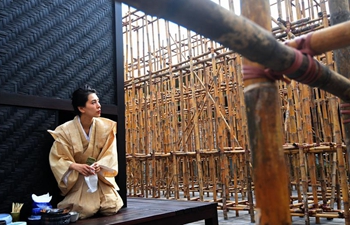HOUSTON, Jan. 23 (Xinhua) -- Researchers of the University of Texas (UT) at Arlington, the United States, received nearly half million U.S. dollars to develop technology for cardiovascular health, the university said Tuesday.
According to a news release by the university, Michael Nelson, an assistant professor of kinesiology and principal investigator of this new project, will work on the 441,000 dollars grant, provided by the National Institutes of Health (NIH), with two other faculty members to develop a device to study how oxygen is delivered to skeletal muscles and how those muscles utilize that oxygen.
"There's no technology like this available," said Nelson, adding "the scientific community has been studying oxygen delivery or oxygen utilization in isolation for some time, but no one has been able to simultaneously study both of these endpoints in the same patient, especially not non-invasively."
He said the technology will use laser light to track the movement of red blood cells in muscles as well as the oxygen content of the muscle itself.
The team plans to develop both the hardware and software in the first year of the grant so that they can begin doing patient studies quickly thereafter. Once developed, the technology will be applicable to a wide range of diseases and health conditions.
The researchers will focus on patients with heart failure in this project because, despite the name of the diagnosis, these patients also have severe limitations in their peripheral blood vessels and skeletal muscles.
Anne Bavier, dean of UTA's College of Nursing and Health Innovation, said the outcome of this study could be transformative for cardiovascular care.
"There are plenty of drugs to help treat patients with heart failure, but which one is the best option? I believe this technology has the potential to address this problem by giving clinicians the tools and insight to define therapeutic targets," Bavier said.
In recent years, the college has been steadily transforming into an important destination for health care research, attracting many leading health care scholars.
With the influx of these scholars has come a significant increase in research grants. The college now has nearly eight million U.S. dollars in active research grants, up 45 percent from the previous year.

















